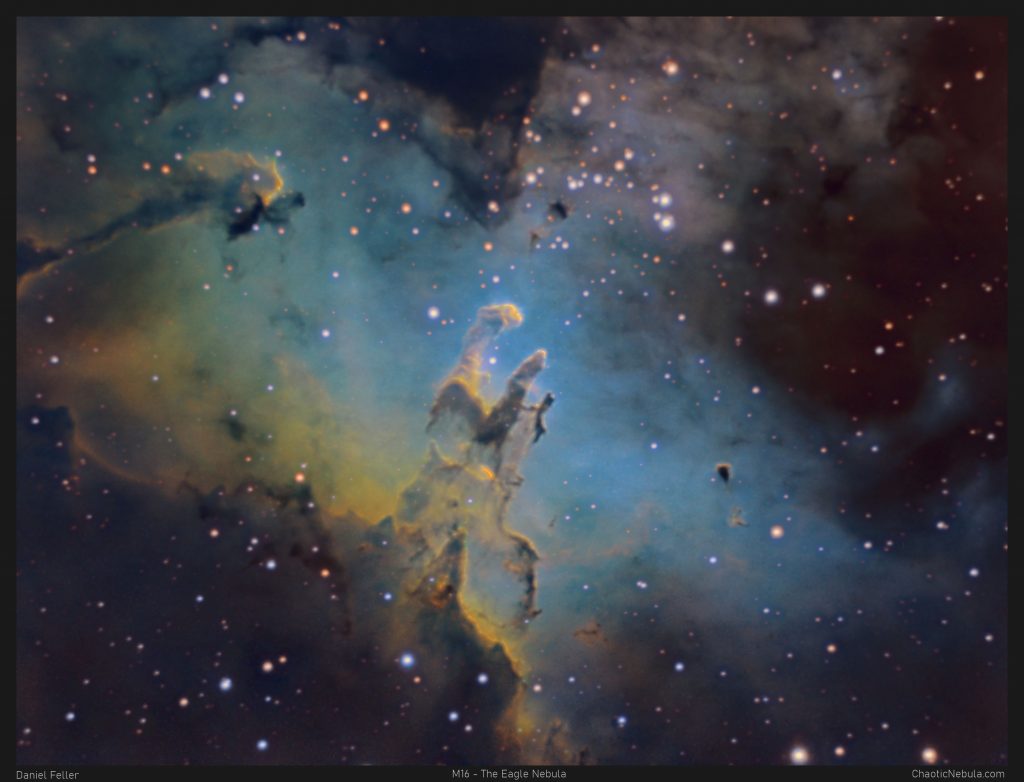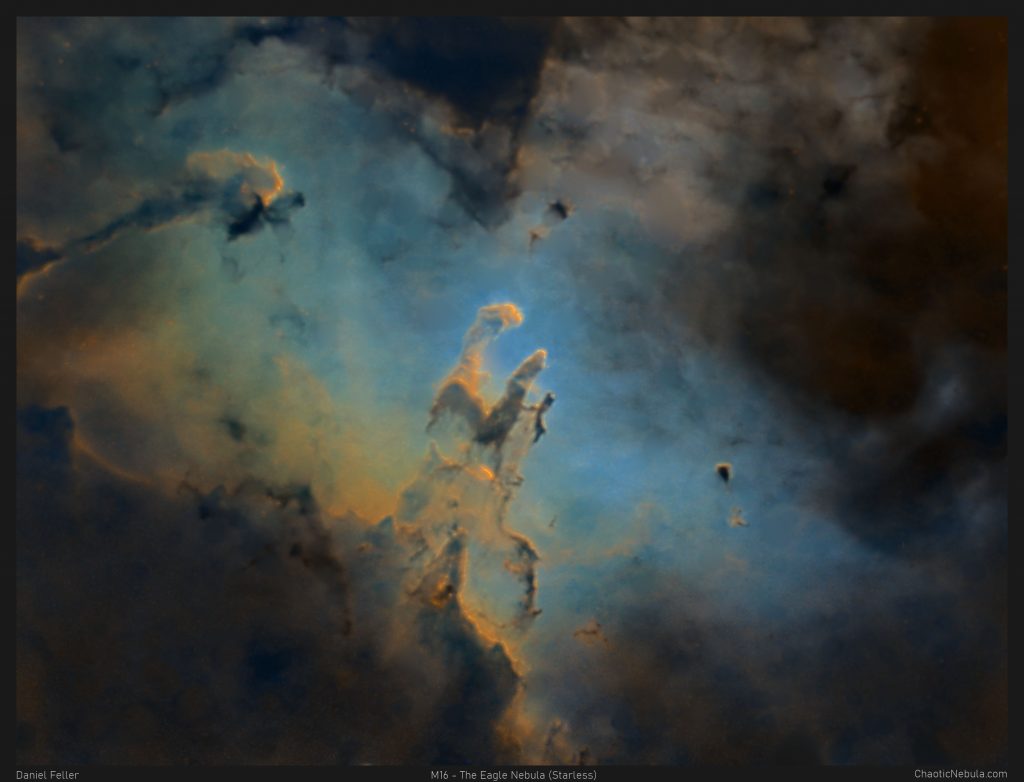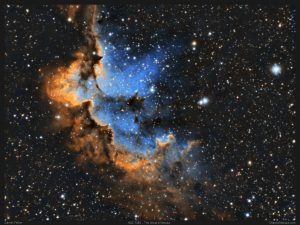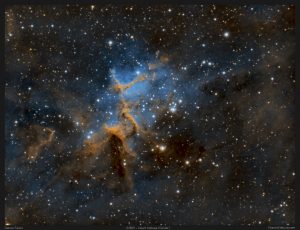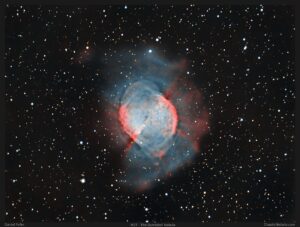The Eagle Nebula is a cluster of stars newly formed or in the process of forming. On April 1, 1995, the Hubble Space Telescope captured an image of the central region of the nebula, which is now famously referred to as the Pillars of Creation. You can see these pillars within the middle of my image. You can al see another feature within this image, the Stellar Spire, which is located to the top-left of the Pillars. Just like the pillars, the Spire is a birthplace of stars.
Located in the constellation Serpens, The Eagle Nebula is 5,700 light years away. Officially, the Eagle Nebula is considered an open cluster. However, a much larger region, identified as IC 4703, is an emission nebula, which contains a strong hydrogen-alpha signal.
Imaging Details
- Workflow: Narrowband
- Sulfur-II: 48*600 seconds
- Hydrogen-Alpha: 24*600 seconds
- Oxygen-III: 24*600 seconds
- Binning: 1×1
- Color: SHO
- Red: Sulphur-II
- Green: Hydrogen-Alpha
- Blue: Oxygen-III
- Total Imaging Time: 16 hours
- Imaging Dates: (8 nights)
- 6/14/2021
- 6/15/2021
- 6/17/2021
- 7/3/2021
- 7/16/2021
- 7/17/2021
- 7/19/2021
- 8/2/2021
Processing Workflow
As noted above, I used my PixInsight Narrowband Workflow with some new processes (creating a starless image) that helped bring out more color and detail. You can watch the single image get transformed into the final, colorful image in the following video.
Location
From northern latitudes, The Eagle Nebula is located fairly low in the southern sky. Ideally, those looking to image the Eagle Nebula should plan for the months of June through September. During that time, the nebula appears highest from the horizon.

Imaging Notes
Based on my latitude, the Eagle Nebula appears very low in the southern sky. Due to tall trees, my window for imaging M16 was roughly 2 hours per night. However, I was lucky enough that the Eagle Nebula was in an optimal viewing angle during the darkest part of the short summer nights.
Some quick tips about imaging The Eagle Nebula
- Green Hue: In previous narrowband images, I used the PixInsight SCNR process to completely remove the green tint from the image. However, I now feel like this removes a lot of the detail and smooth transitions between colors. This time, I’ve used a modified workflow for SCNR where I only remove 50% of the green hue. I feel this make for a more interesting final image.
- Field of View: A wide field of view will allow you to capture more of the surrounding area. In order to capture the details of the Pillars of Creation and the Stellar Spire, a narrow field of view is required. For this setup, I ran the telescope at F/10, resulting in a focal length of 3048mm.
- Hydrogen-Alpha: The HA region of the Eagle Nebula is extremely strong. Although I had 4 hours of images (10 minutes each), I really only needed 3 hours. Because the HA signal was so strong and the nebula filled up the entire frame, using dynamic background extraction in PixInsight provided little benefit.
- Sulphur-II: There is a decent SII signal in the Eagle Nebula. However, in order to capture enough of the signal, I had to double my initial 4 hours of images to 8 hours. Because of this, it helped reduce the overall noise level in the integrated image.
- Oxygen-III: With 4 hours, I was able to get a decent OIII signal. Even though the OIII image was strong, my original plan was to capture 6 hours worth of date. Unfortunately, I ran out of time. However, I don’t think the extra two hours of data would have made a big difference in the final result.
